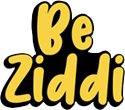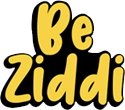Choosing the proper printed format for communicating your message can make a significant difference in how your audience perceives your content. Whether you’re presenting information about a service, event, or product, the physical material you select plays a role in engagement, clarity, and retention. Some formats are better suited for concise, targeted messaging, while others lend themselves to more detailed storytelling. Understanding the purpose of your communication and the preferences of your audience is the first step in ensuring your printed materials achieve their intended effect.
When deciding between options, it’s helpful to consider the structure and function of each. For example, knowing what a brochure is—typically a folded document designed to convey organized information in a visually appealing way—can guide your choice. Brochures often accommodate more detailed content than simpler pamphlets, making them ideal for audiences who need both context and depth, while still maintaining clarity and ease of reading.
Defining Pamphlets and Brochures
A pamphlet is a slim, unbound booklet or single-sheet leaflet dedicated to educating, advocating, or distributing information on a particular theme. Their small, manageable size and lightweight construction allow pamphlets to travel easily, fitting into bags, pockets, and standard envelopes. Pamphlets are often distributed at public events or health fairs, displayed on racks in waiting rooms, or included with direct mailings. Their strength is brevity: crisp, focused text with few images, ensuring readers quickly grasp the intended message or key facts. The straightforward visual style supports the practical aim of delivering essential details without distraction or unnecessary embellishment.
A brochure, by contrast, is a polished, often multi-panel printed piece created with marketing and promotion in mind. Brochures feature attractive layouts, bold headings, glossy or high-quality paper, vibrant photography, and strong branding elements. They typically provide more comprehensive information, often spanning multiple pages or folds. A brochure can give readers an in-depth understanding of a business, service, or event. This format is popular at trade fairs, hotel lobbies, luxury real estate showrooms, and in the hands of sales teams—places where bridging the gap between information and persuasion can drive real-life business results. The main goal is to engage the audience, foster trust, and motivate the next action—such as scheduling a meeting, making a phone call, or completing a purchase.
Purpose and Content
Pamphlets prioritize clarity and brevity. Their content provides guidance and education or seeks to influence opinions on specific social, political, or public health topics. The goal is often to distill complex topics into understandable, approachable chunks. For example, many hospitals distribute pamphlets about “how to prevent the flu,” which include bullet-point lists, step-by-step instructions, or statistical facts. Similarly, advocacy groups may produce pamphlets about voting rights or environmental conservation to inform the community. Text is delivered plainly and directly, free of marketing jargon, with diagrams or tables used only where they serve to clarify.
Brochures are designed with a different mission—they’re crafted for engagement and action. Businesses and organizations use them to showcase their strengths, present their services or products, and entice the reader through vibrant imagery and persuasive writing. A software company’s brochure might include client testimonials, a feature comparison table, and screenshots, all integrated with strong branding and an engaging call to action. Tourism bureaus rely on travel brochures to not only describe destinations but also spark wanderlust with bright, inviting images. The language in brochures is carefully chosen to inspire excitement and confidence, motivating the reader to take action, whether that means booking a trip, requesting a quote, or starting a new project.
Design and Layout
Pamphlets are typically designed for efficient, functional simplicity. Most often, they’re printed on standard, low-cost paper and feature a single fold or a few pages stitched together. The visual design complements the content, with small color blocks, clearly labeled sections, or simple charts reinforcing the main points. Most pamphlets refrain from using heavy graphics or photos to maintain the clarity of the information presented. The design is utilitarian, with a text layout that favors easy skimming or quick reference, which is especially useful for events such as health screenings, school orientation nights, or local service fairs.
On the other hand, a brochure stands out with a visually dynamic, often high-end look and feel. Most brochures use glossy or semi-glossy premium paper and may incorporate metallic inks, die cuts, or other specialty printing techniques. The layout is carefully constructed to lead the reader’s eye smoothly through sections, often using columns, panels, or folds that organize information intuitively. Infographics, custom illustrations, and high-resolution photos play a prominent role, paired with eye-catching titles and clear calls to action. The key to success is creating visual interest while preserving clarity—so the reader is enticed to read, not overwhelmed. Attention to branding, color consistency, and copy flow results in materials that are as memorable as they are informative.
Distribution and Cost
Distribution works well with pamphlets, which are perfect for wide-reaching, budget-friendly campaigns such as public health information, education, and community outreach. These pamphlets are lightweight, affordable, and ideal for use in canvassing, as handouts, or for mailing. Brochures, although more costly, provide greater impact through high-quality design and detailed information, making them suitable for trade shows or retail to attract and persuade. The higher cost can increase perceived value, helping a business appear more trustworthy, unlike disposable print options.
Choosing Between a Pamphlet and a Brochure
Making the correct choice means evaluating your strategic objectives, your audience’s expectations, the complexity of your message, and your available budget. Rather than defaulting to the familiar, think critically about which format best supports your goals:
- Objective: If your goal is to educate or inform with succinct information, a pamphlet is ideal. If you need to promote, persuade, or sell, opt for a brochure.
- Audience: Assess who will receive the material. Pamphlets are well-suited for the general public, while brochures are more effective for targeted prospects or clients.
- Budget: Pamphlets offer an affordable route for mass communication, while brochures justify a larger investment for high-value opportunities.
- Content: Consider the complexity and visual requirements of your information. Technical, text-heavy messaging is well-suited for a pamphlet. If you want to leverage visuals and comprehensive details, a brochure is the ideal choice.
Conclusion
Whether you opt for a pamphlet or a brochure, the best choice is driven by purpose and audience. Pamphlets enable cost-effective, wide-reaching educational outreach and are often best suited for simple, topic-specific messaging. Brochures offer depth, compelling visuals, and credibility, making them practical tools for marketing, promotion, and capturing attention in competitive environments. By carefully considering your communication goals and the message you need to convey, you’ll select the right print material to reach and resonate with your audience, maximizing both impact and results.







